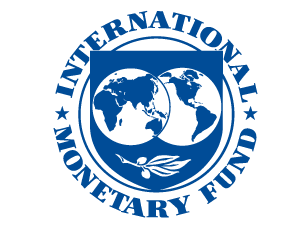
IMF on Global Economy 2021: Prospects and Challenges
In January, We projected 2021 global growth at 5.5 percent, but prospects of a stronger recovery are emerging – because of additional fiscal stimulus, especially in the U.S., and the prospects of broader vaccination. We will update our global forecasts in the new World Economic Outlook coming out in early April. However, the global recovery has been incomplete and unequal.
It is incomplete because despite a stronger than expected recovery in the second half of 2020, GDP remains well below pre-pandemic trends in most countries. The recovery paths have also been different across countries, as well as across sectors.
China , in many ways, has already completed its recovery, returning to its pre-pandemic growth levels ahead of all large economies. But growth still lacks balance, with private consumption lagging investment. We expect consumption will catch up, as investment growth normalizes. But there are significant risks which I will describe momentarily.
Growing gap
Outside of China, though, there are worrying signs that the gap between advanced economies and emerging markets is growing.
We project that cumulative income per capita in emerging and developing countries, excluding China, between 2020 and 2022 will be 22 percent lower than what it would have been without the pandemic.
That will translate into close to 90 million people falling below the extreme poverty threshold since the pandemic started.
China has been a bright spot in its continued fight against poverty, but even there the pandemic has hurt vulnerable people the most.
Exceptional Uncertainty
As I said, uncertainty about the recovery is exceptionally large.
We don’t know how prolonged the health crisis will be. Access to vaccines remains very uneven, both across advanced and emerging economies.
Low-income countries might not see significant vaccination well into 2022, and that is a problem: this pandemic will only really be over when it is over for everyone.
Another risk is the spread of resistant mutations that threatens to reduce the efficacy of current vaccines and could undermine or delay the recovery.
Besides these bigger issues, there are also uncertainties about the effectiveness of policy actions and differences in what countries can do. Some countries face limited fiscal space and higher debts. While China still has some room for maneuver, many others, especially low-income countries, do not.
Tighter financial conditions could exacerbate vulnerabilities in countries with high public and private debt. We have seen recent increases in bond yields as the growth outlook of some advanced economies improves, leading markets to expect an earlier withdrawal of monetary stimulus.
In the medium-term, the crisis could leave deep scars. In the past, advanced economies have seen their output reduced almost 5 percent below pre-recession trends five years after the beginning of a recession. It could be worse in countries that cannot afford a strong macroeconomic response and/or have large services sectors more affected by the pandemic. Everywhere, the crisis has had a disproportionate impact on the young, the low-skilled, and women.
In the long-term , rising carbon emission levels remind us that climate change is also a significant challenge, and Asia has a major role in addressing it.
The way forward
These challenges are daunting, but they can be overcome with concerted actions by all countries. Let me highlight three priorities.
First, end the pandemic swiftly. The international community must swiftly ramp up vaccine production. We must ensure that low-income countries have the financing to procure and distribute vaccines. This requires bolstering funding for the COVAX initiative and the logistics for delivery.
On this front, we ask that leading economies support vaccine production and provide finance to developing countries.
Second, countries should maintain economic support and calibrate it to the stage of their recovery and the pandemic. Where the pandemic continues, the priority is to protect lives and livelihoods. As it wanes, support should become more targeted, focusing on mitigating scarring, supporting the reallocation of resources, and ensuring that the post-pandemic economy is an inclusive and sustainable one.
The best policies will be those that support the recovery, help strengthen resilience, and tackle long-standing challenges. For example, foster the transition to green energy and digitalization.Operations.
———————————————————————————————————————————————————————
Information Source: Read Full Report
By: Geoffrey Okamoto, First Deputy Managing Director, IMF, China Development Forum



